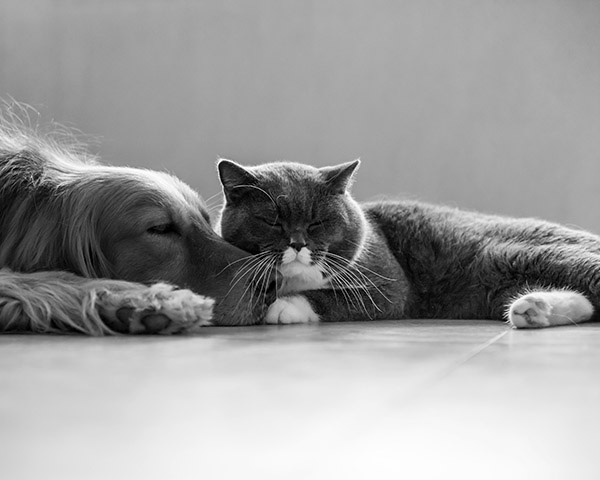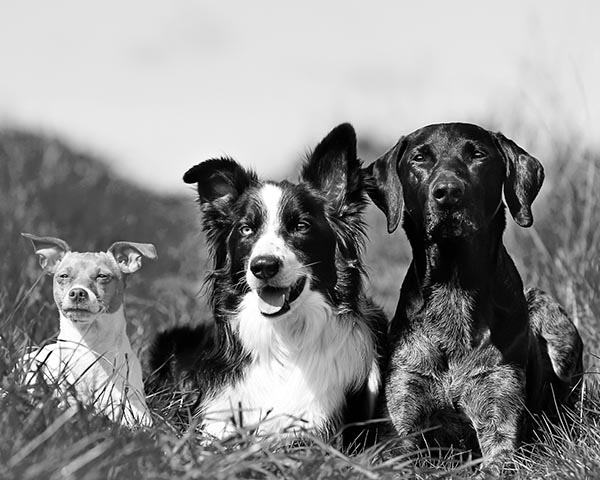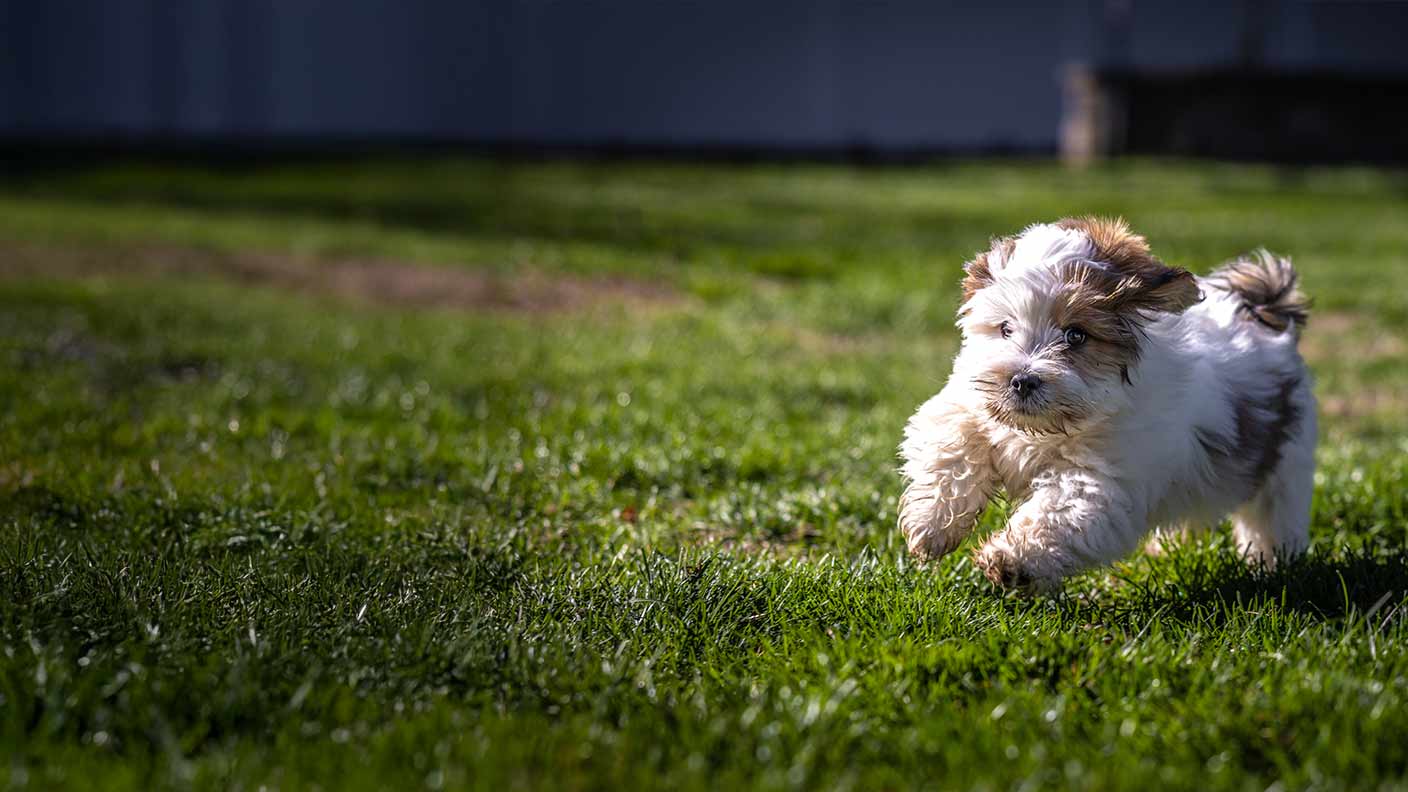Lhasa Apso dog breed information and advice
Looking at their appearance, you may be surprised to find out that the Lhasa Apso dog breed was originally bred for Tibetan monks as an indoor guard dog. Not so much nowadays. Instead, the Lhasa Apso’s diminutive stature and fluffy appearance are more for the creature comforts of the couch than a monastery.
If you’ve had your eye on a Lhasa Apso for a while, or you’re looking for a little more information before welcoming a Lhasa Apso puppy into your home, you’ve come to the right place. Our breed guide contains the facts you need to know, including Lhasa Apso lifespan and temperament.
Lhasa Apso facts

| Lifespan | 12 – 14 years |
| How much | £450 – £1200+ |
| Size | 22 – 28 cm |
| Weight | 5.4 – 8.2 kg |
| Colours | Golden, sandy, honey, dark grizzle, slate, smoke, parti-colour, black, white or brown |
| Grooming | Daily brushing |
| Temperament | Obedient, intelligent, fearless, independent |
| Exercise | 40+ minutes daily |
Pet insurance for your Lhasa Apso
From when they’re a little Lhasa Apso puppy through to adulthood and old age, it’s important that your pet is covered by dog insurance. Health problems can happen at any age, by an injury or illness, and you’ll want to make sure your Lhasa Apso has the right cover for them. Common health conditions that affect Lhasa Apsos include:
By insuring your Lhasa Apso with pet insurance, you could get help toward the cost of vet consultations, medication and surgery. So, no matter the situation, you can provide the health care that your dog needs.
Sainsbury’s Bank Pet Insurance
Sainsbury’s Bank Pet Insurance can protect your Lhasa Apso puppy from as young as eight weeks old.
Choose from three flexible insurance options:
- Lifetime – protect your pet for a lifetime with up to £10,000 towards vet costs, 24/7 vet assistance and cover at home and abroad.
- Maximum benefit – claim vet fees during the policy’s lifetime up to the policy limit of £3,000 or £6,000.
- Time limited – cover vet costs for short-term health conditions of up to £3,000, or for 12 months.
Please note that we won't cover any pre-existing conditions and that terms, conditions, excesses, exclusions and limitations apply.
How to care for a Lhasa Apso
Caring for a Lhasa Apso dog means focusing on some key areas like their diet, grooming, exercise and training to keep them happy and healthy.
Feeding and nutrition
Feed Lhasa Apso puppies small amounts around 3 – 4 times a day, but remember, they only have small tummies. As they grow up, you can reduce the number of feeds but increase the portion sizes as per guidelines on the dog food packaging.
You’ll need to keep an eye on your Lhasa Apso’s weight. Sometimes it can be difficult to see their weight if they have a long coat, so weigh them regularly. Grooming is an ideal time to feel your dog’s shape and check if they are putting weight on. It helps to measure their food and keep the treats to a minimum for when training and for when they’re extra-special good dogs only.
Grooming
Lhasa Apso breed has a long, dense coat that requires regular grooming to keep in good condition. Their long and thick coat becomes easily matted. Brush your dog’s coat daily to remove any tangles and prevent matting. Pay close attention to the ears, cleaning them when needed, to prevent ear infections.
Try to bathe your dog every 2 – 4 weeks to keep their coat clean and easier to groom. Most Lhasa Apso dogs enjoy bath time, especially if they’ve been bathed from a young age. When drying your dog, make sure you dry in downward strokes and not in a circular motion, as this will cause the fur to mat. Blow-drying your dog will make the drying process easier and ensure that they are fully dry – and extra fluffy. If your dog is left wet, it will get cold which could lead to an illness. Your dog may be scared of the blow dryer to start with, but with praise and time, your dog will learn not to fear it.
A Lhasa Apso’s nails will need trimming every 2 – 3 weeks to stop them from overgrowing, causing pain, or becoming infected. You’ll also need to clean their tear stains and ears regularly to prevent any infections. Make sure your dog’s fur is kept out of its eyes either by tying it back or keeping it trimmed.
Exercise
Due to the Lhasa Apsos small size, their exercise demands are minimal. You should walk Lhasa Apso dogs for 30 minutes a day, or you can split it into two 15 minute walks. They love playing fetch, which is an ideal way to get some additional exercise.
Make sure your dog always has toys to play with; they are a smart breed and will get bored easily if they have nothing to do.
Training
Training your Lhasa Apso pup may be difficult. It’s not that Lhasa Apsos have behaviour problems, they’re obedient, but they be a touch stubborn. Luckily, they love toys, so use them as a reward for good behaviour. Praise your dog whenever it completes a command and remember that the more you practice, the quicker they’ll learn.
When training your dog, start with house training. When your Lhasa Apso dog has learnt to go to the toilet on command in the correct area, it will be easier to teach them other commands. Many breeders start puppy toilet training before the puppies go to their new homes, giving you a good starting point. Training classes are a great way to learn tips and support when training your Lhasa Apso.
Lhasa Apso Temperament and behaviour
Lhasa Apsos are alert and will bark at unfamiliar sights and sounds, that’s the Tibetan guard dog in them. This unfortunately does mean that Lhasa Apso bark a lot, but this can be kept under control through training.
Despite having the qualities of a guard dog, they have a friendly and playful personality. Lhasa Apso dogs have gentle temperament making them great companions for children but beware that they will be protective of their owners. Early socialisation will be important, so they can get used to being around strangers.
Common health problems
Lhasa Apso dogs are a relatively healthy breed, but there are some health issues that you should be aware of. They are brachycephalic, which means that they have a short nose and flattened face. Brachycephalic dogs can suffer from problems involving their breathing, eyes, skin, birthing and spine/musculoskeletal issues.
Having the right dog insurance for your Lhasa Apso can give you that peace of mind that health issues are covered whenever they happen. Below are the main conditions to keep an eye out for.
Generalised progressive retinal atrophy (GPRA)
GPRA is a group of inherited eye diseases that slowly causes blindness over the course of months or years. This can take months or years to happen. Early signs of this condition are poor vision in dim lighting, and reluctance to go outside when it’s dark. Their pupils may be dilated or an increase in eye shine may be seen.
This condition normally affects dogs that are three to eight years old, there’s no treatment for this condition and if your dog has this they will sadly go blind. But with your help, love and affection, your dog will adapt to their blindness and live a happy life.
Atopic dermatitis
Atopic dermatitis is a skin disease caused by a genetic tendency to develop an allergy to environmental allergens like dust mites, pollens, moulds and dietary proteins. With this disease, your Lhasa Apso’s immune system reacts to the irritants causing inflammation that leads to itchiness. Affected dogs will rub, lick, chew, scratch or bite themselves to relieve the itch. There are many ways to control this condition that include medication, vaccines, injections and changes to diet.
Is a Lhasa Apso dog right for you?
This breed is well suited if you’re looking for a playful, loving and gentle addition to your family. While Lhasa Apsos can be a touch stubborn and take more maintenance than some dogs, they’re loyal guardians that can fit into any home.
Frequently asked questions
How long do Lhasa Apso dogs live?
Lhasa Apsos have a life expectancy of 12 – 14 years. Their diet, exercise, grooming and training can all have an impact on their health and therefore affect their lifespan. With regular vet visits and the right dog insurance, your Lhasa Apso can live a healthy, happy life.
Do Lhasa Apso dogs shed?
You may think that they’re heavy shedders considering how much hair they have. The truth is that Lhasa Apsos shed very little or not at all. They’re like humans in the fact that their hair continues to grow, rather than shedding like other dogs’ coats do. Lhasa Apsos are not fully hypoallergenic, no dog is, but the lack of shedding means fewer irritants for allergy sufferers.
How much should a Lhasa Apso weigh?
An adult Lhasa Apso should weigh between 5.4 – 8.2 kg. Your dog’s diet and exercise will affect its weight, so it’s important to weigh their daily food and make sure they’re exercised for at least 30 minutes a day. Check the dog food packaging for nutritional content to make sure that it isn’t too high in fat or sugar.
Why do Lhasa Apsos shake?
If your dog keeps shaking you should take them to the vet to get them checked. There could be an underlying health problem causing them to do so. Idiopathic tremors, also known as shaker dog disease, are common in small white dog breeds. It’s an inflammatory brain disease that requires medication to manage the condition.

Browse our guides
Choose from our list of helpful guides and information

Explore dog breeds
Find out how to keep your dog healthy and happy

Cat breed guides
How to care for your cat, common health problems and more
Terms and conditions
Important information
* Guaranteed discount for Nectar members: The discount is based on information related to you and the transactions you've made with Sainsbury's supermarkets and Sainsbury's Bank using your Nectar card. For more information go to sainsburysbank.co.uk/nectar.
Sainsbury's Bank plc, Registered Office, 33 Charterhouse Street, London, EC1M 6HA (registered in England and Wales, no 3279730) is authorised by the Prudential Regulation Authority and regulated by the Financial Conduct Authority and the Prudential Regulation Authority (register no. 184514).
Sainsbury's Supermarkets Ltd is an appointed representative of Sainsbury's Bank plc. Sainsbury's Bank plc acts as an introducer to Pinnacle Insurance Ltd who is authorised by the Prudential Regulation Authority and regulated by the Financial Conduct Authority and the Prudential Regulation Authority (register number 110866). Registered office: 4th Floor, Limelight, Elstree Way, Borehamwood, Hertfordshire, WD6 1JH. Sainsbury’s Bank Pet Insurance is arranged, administered and underwritten by Pinnacle Insurance Ltd. Sainsbury's Bank plc and Pinnacle Insurance Ltd are not part of the same corporate group.
We do not provide personal recommendations to customers.
